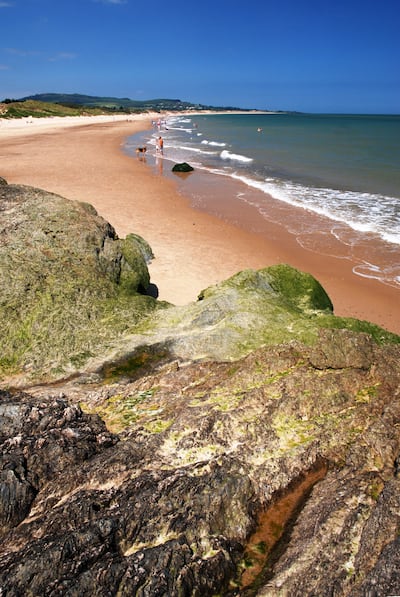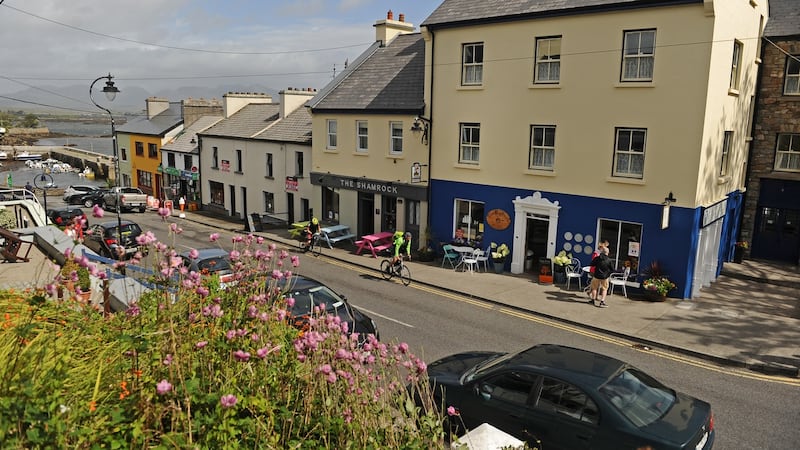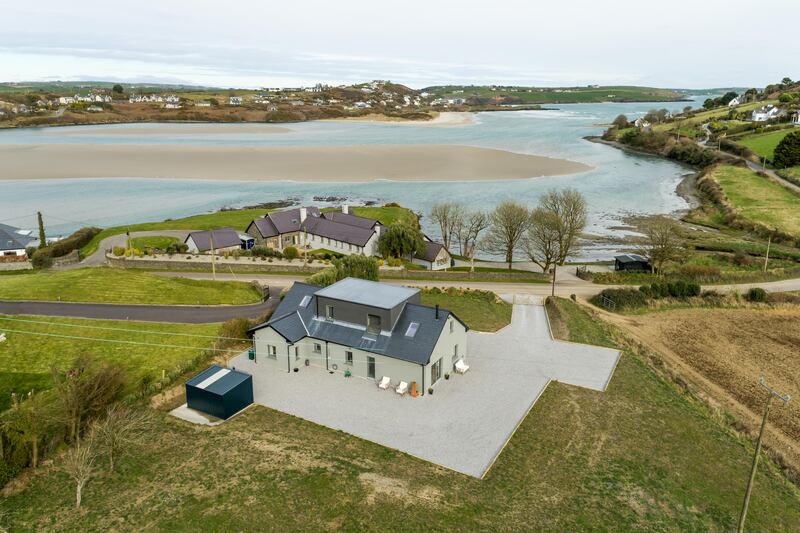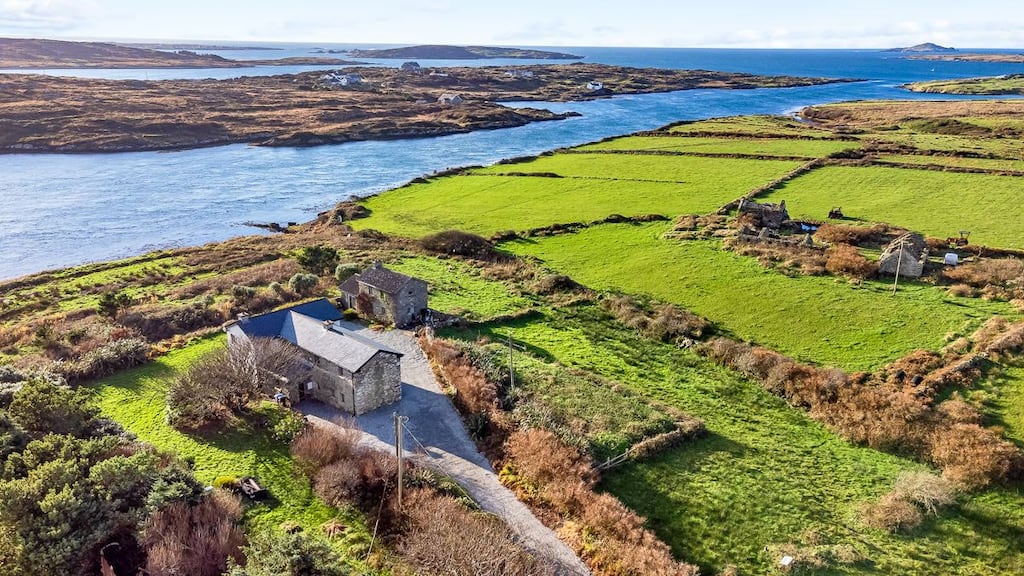Thinking of buying a holiday home this year? Easter usually kick-starts the process for those selling or buying. Right about now, the first wave of annual visitors is descending on Brittas, Ballyconnelly and Baltimore. For those who have dreamed of owning their own holiday haven, the market typically gets going in the next few weeks.
This year, however, while a lack of supply remains an issue, a sense of nervousness is also starting to creep in, driven by rising interest rates, tech lay-offs and the cost-of-living crisis.
The Brittas empire
Brittas is long beloved of Dubliners. With its 5km of powdery sand, some would argue it’s the first beach south of the capital worth its salt. Its proximity to Dublin is a trump card.
“Buyers are predominantly from Dublin, yes, without question. I would say 90 per cent are Dublin-based, usually south Dublin because of its proximity to home,” says Catherine O’Reilly of Sherry FitzGerald. She has been selling homes in the area for 20 years.
READ MORE
“Buyers are looking for a place close to the sea where you can head down on a Friday and you are there with a nice glass of wine, out on your deck, by 5.30pm,” says O’Reilly. You can get away from it all without spending half a day in the car.
“If there is a problem at home, you can get home in an hour. If there is a problem at home that you want to get away from, you can be in Brittas in an hour,” she says.

Brittas Bay Park and Brittas Bay Village are the main holiday home developments, apart from mobile home parks, or “resorts” as some here are marketed. Every year five or six properties come up for sale between the two gated developments, says O’Reilly.
In 2015 you could pick up a home in Brittas Bay Park for less than €200,000. Since then, values have risen strongly. In 2016, 39 Brittas Bay Park was bought for €230,000. The same house sold last year for €440,000, according to the Property Price Register, an increase of some 90 per cent.
Working from home has increased the utility of holiday properties in the area. Some owners are reliving their childhood summers of the family decamping there for the entire summer, with parents shuttling back to the office as needed.
The selling season is now. “People call me in February and March, they put it on the market in April and May and the property will be sold in May and June and the new buyer will have the use of it in the summer”
— Catherine O’Reilly of Sherry FitzGerald
The freedom for children to roam safely in gated developments with sprawling greens and known neighbours is a big draw. “Ask the majority of people and they will tell you they probably went there for proximity to the beach, but the most enjoyment they get out of it is the kids in and out of each other’s houses and the parents can relax. For the family market, that is what you are looking for,” says O’Reilly.
Older buyers use the houses year-round. “Walking on the beach in the winter is as attractive to them. They are looking for a bit of quiet and solitude, somewhere to work from home for three or four days, for a change of scenery,” says O’Reilly. The new Elephant & Castle up the road and the Bay Cafe form a hub for the area.
The selling season is now. “People call me in February and March, they put it on the market in April and May and the property will be sold in May and June and the new buyer will have the use of it in the summer,” says O’Reilly. There may be a few further sales in September.
Buyers will need to keep an ear to the ground too. “The last two sales I had in Brittas Bay Park were off market. We had underbidders for other houses and it was a case of putting out feelers to anybody thinking of selling to really just match the buyer and the vendor. But this year, I feel everything that we take on will be going to the open market,” says O’Reilly.
Buyers are predominantly cash buyers, but not exclusively so, says O’Reilly. “It’s too soon to say where values will go this year. We haven’t seen the value of anything falling, so I don’t anticipate we’ll see the value of these falling.”
Connemara, here we come
In Connemara, potential buyers have been in contact since the beginning of the year, says Sorcha O’Sullivan of Matt O’Sullivan estate agents. “Since the start of February, it just hasn’t stopped. It’s been very busy,” says O’Sullivan. “We have buyers contacting us. We’d like more properties to sell. We’d love to get more on our books because the buyers are still there.”
Holiday home sales happen when the tourists come. In Connemara that season runs from St Patrick’s Day to October. Supply is the thing. “We would like more properties to list at this time of year because it’s really when the tourists are here that’s when we are selling more houses,” says O’Sullivan. Ballyconneely and Roundstone, favoured by young families, are where prices are highest. Carna and south Connemara are more affordable.
Most buyers don’t want a large house with lots of upkeep, but rather a manageable property with a bedroom for visitors and one for a home office
“Is there good wifi?” That’s a question that she hears a lot. Remote working has brought forward some people’s plans to buy a holiday home, says O’Sullivan. “While they are not moving down here permanently, they are spending more time down here in their holiday home because they can work from here. They might take an extra couple of weeks on either side of their holidays to work from here,” she says.
“People are using a lump sum from their pension to buy a property, or they have got an inheritance from parents, so they are kind of more in the 50s and 60s age bracket,” she says.

Most buyers don’t want a large house with lots of upkeep, but rather a manageable property with a bedroom for visitors and one for a home office. They want something close to a town or village. Holiday homes in the area are all second hand. “People who buy generally accept they have to do some work to the property,” says O’Sullivan. Getting planning permission on a greenfield site is hard for locals and impossible for visitors. Buying something derelict and renovating is an option, though government grants are mostly contingent on the house being a principal private residence.
If you want a place with history, a four-bed house with bay views at Cushatrough, close to Clifden and Omey Strand is on the market through Matt O’Sullivan for €650,000. “It used to be the old shop for the island, so they used to row across the bay to get their provisions here,” says O’Sullivan. “It’s got a lot of history, but it’s very cool and well decorated.”
On the grounds too is an old two-storey cottage, connected to electricity and a septic tank, which could be revamped to provide accommodation for visitors or even rental income.
West Cork
In the west Cork holiday home market, too, the problem is supply, says Maeve McCarthy of Charles McCarthy estate agents. Remote working has increased demand among Irish buyers. “People are now remote working all year round and they have flexible working, too, where they can work outside the office for maybe a month or six weeks of the summer,” says McCarthy.
Remote working has changed people’s usage of their holiday homes, making them more akin to second homes. “People are tending to be in west Cork for longer periods than previously because their work is more flexible,” she says.
Buyers are predominantly cash buyers, so those requiring a mortgage may struggle to compete
There is a dearth of houses of all kinds for sale at the moment, and the holiday home market is no different, says McCarthy. “2022 was a very strong year in relation to volume and prices achieved, but so far in 2023, we are waiting for houses to become available.”
The popular areas are Schull, Castletownsend, Baltimore, Union Hall, Roscarbery, Clonakility, Kinsale, extending west to the Beara and Sheepshead peninsulas. Buyers are predominantly cash buyers, so those requiring a mortgage may struggle to compete.

Easter is a key time for potential sellers to make a decision. “People usually come down and check out if there is any damage done after the winter – does the place need a lick of paint? – and they might say, ‘Oh, look, will we think of selling?’ I would say after Easter, if it’s still very quiet, we are in trouble.”
Rising interest rates, tech lay-offs and the cost-of-living crisis may be feeding into decision-making. “I think sellers are nervous. They don’t want to go and list and not be able to sell. There is a nervousness about how their houses will do, but we know that anything that is listed will do very well,” says McCarthy.
“There is demand, people are contacting us saying they are actively looking, but there is just nothing available.”
Sales in the area at the tail end of last year show Strand House, a four-bed Georgian residence on 1.5 acres in Clonakilty sold for €1,175,000. Fortfield Cottage, a two-bed period farmhouse near Schull with an adjacent, self-contained, one-bedroom guest cottage sold for €475,000.
One of the few new properties on the market so far this year is The Breakers, a three-bed home with mezzanine study overlooking Inchydoney beach priced at €950,000 through Charles McCarthy estate agents. Freshly renovated in 2021, this architect-designed home on one acre has a B2 energy rating. It comes with an outside shower for sandy feet.
On the market
― The Breakers, a three-bed home with mezzanine study overlooking Inchydoney beach, €950,000 through Charles McCarthy
― Four-bed house with bay views at Cushatrough, close to Clifden and Omey Strand, €650,000 through Matt O’Sullivan
― New two-bed apartments at Currach Cove over-looking Kilkee Bay in Co Clare, starting at €290,000 through O’Connor Murphy
Two homes too many?
Not everyone is a fan of holiday homes.
Critics say holiday homes squeeze out locals who cannot compete on price with purchasers of second homes. This has the potential to hollow out local schools and businesses. In tourist hotspots such as Dingle, awash with holiday homes, the availability and affordability of housing for hospitality workers has become an issue. In the face of a climate emergency and a housing crisis, some query whether it’s ethical to own a spare house.
Holiday homes that are let out bring tourists and create jobs, others argue. Second homes left largely unoccupied are more problematic, however. On the other hand, remote working means some second homes are being used more, increasing their owners’ stay and spending in an area.
Latest census figures show there were 66,135 vacant holiday homes in April 2022, an increase of 4,000 since 2016. The most popular counties for homes used for recreation or leisure are Donegal, Kerry, Cork, Wexford and Mayo, according to CSO figures.
[ New tax on vacant homes: all you need to know if you have oneOpens in new window ]
Now these homes may be facing a new tax.
Introduced in Budget 2023, a new vacant home tax, which is aimed at increasing the supply of residential properties, applies to any residential properties that are occupied for fewer than 30 days in a 12-month period. So, if you use your holiday home for only a fortnight every summer and it is vacant for the rest of the year, then you will have to pay the tax.
The tax is charged at a rate three times the local property tax applying to the home. So, if you own a second home valued at €300,000 that is occupied for fewer than 30 days a year, you pay the annual €315 local property tax, plus an additional tax of €945 a year. In total, the owner will pay €1,260 a year under these two property taxes.




















